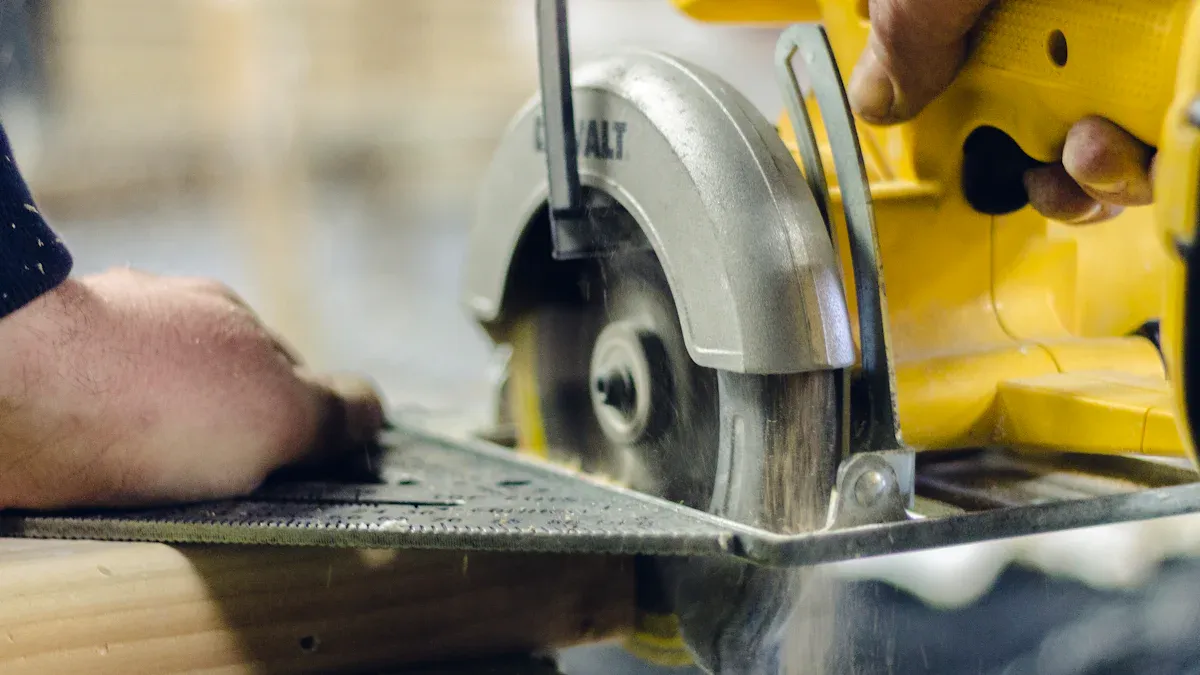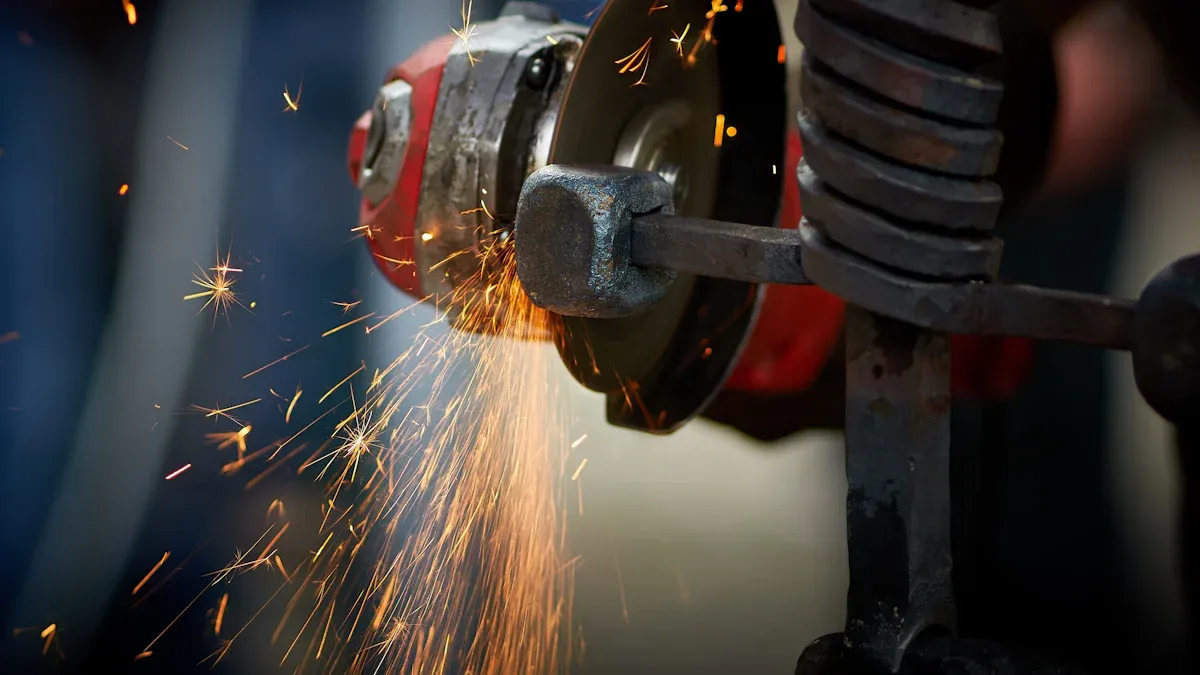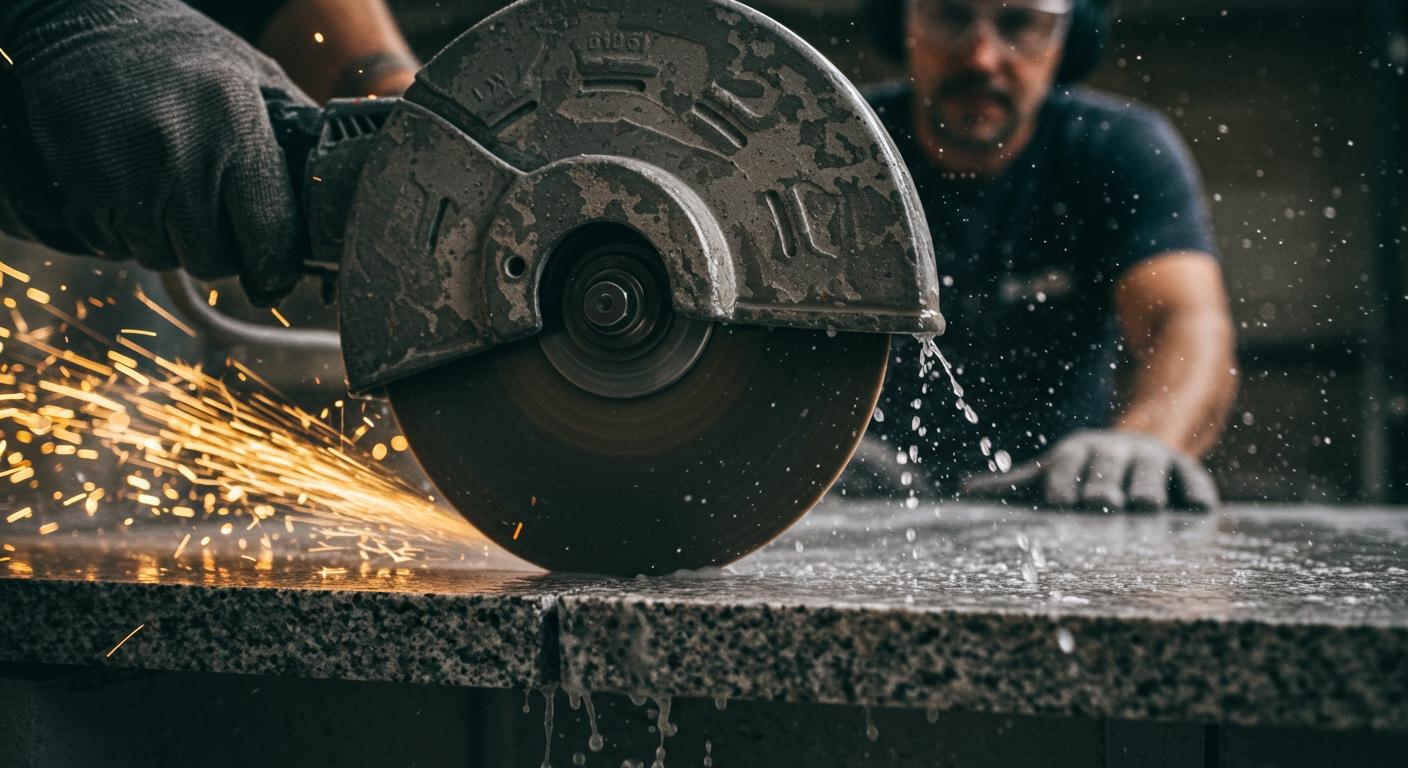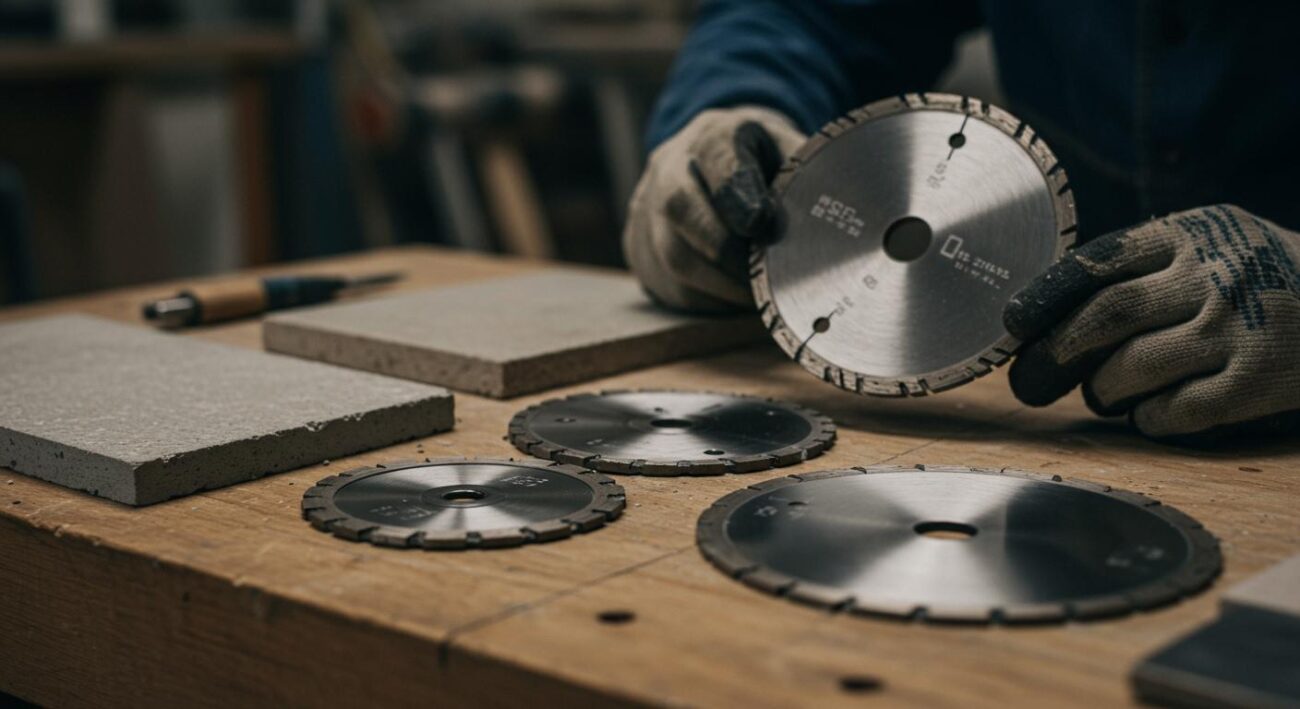Job site inefficiency and rapid blade wear directly impact your bottom line. You can boost your return on investment by mastering your diamond saw blade. This is a critical professional skill.
Are you getting the maximum life and performance from every diamond blade you purchase?
This guide provides the expert knowledge you need. You will learn to select, use, and maintain your blades for peak efficiency and cost-effectiveness on every project.
Key Takeaways
- Understand your diamond blade. It grinds material, it does not slice. The metal bond holds diamonds and wears away to show new ones.
- Match the blade to your material. Use a soft-bond blade for hard materials. Use a hard-bond blade for soft materials. Also, pick the right rim type for your cut.
- Use proper cutting methods. Wet cutting is best for blade life and safety. Do not force the blade. Make shallow cuts for thick materials.
- Maintain your blades. Dress a dull blade by cutting soft, abrasive material. Inspect blades for damage before each use. Store them in a dry place.
Understanding Your Diamond Saw Blade
To master your tools, you must first understand how they work. A diamond saw blade doesn’t slice through material like a knife. Instead, it performs a grinding action. Each exposed diamond crystal on the blade’s edge acts as a tiny cutting tool, fracturing the material on a microscopic level.
The Grinding Action
When you are cutting hard, brittle materials, the process involves several key steps:
- The diamond crystals create small cracks in the material.
- As the blade moves, these cracks expand and merge.
- This action causes chipping and creates small pits.
- The material is removed in a brittle mode, leaving a clean cut behind.
This grinding process is what allows diamond blades to tackle the toughest job site materials.
The Role of the Bond
The bond is the metal matrix that holds the diamond crystals in place. It plays a critical role in the performance of all diamond blades. As the blade works, the bond forms a supportive “comet’s tail” behind each diamond. This tail provides essential mechanical support, allowing the diamond to do its job effectively. The bond is designed to wear away at a controlled rate, exposing new, sharp diamonds as the old ones become dull. Manufacturers adjust the bond’s wear resistance by mixing metal powders like cobalt, tin, and copper to create the perfect hardness for a specific application.
Matching Bond to Material
Selecting the right bond hardness is the most important decision you will make. The rule is simple but crucial: the bond hardness should be the opposite of the material’s hardness.
Hard, dense materials like cured concrete or granite wear down diamonds quickly. A softer bond erodes just fast enough to expose new diamonds, keeping the cutting action efficient. Soft, abrasive materials like green concrete or asphalt don’t wear down diamonds as fast. A harder bond is needed to resist the abrasive wear and hold onto the diamonds longer.
| Material Type | Material Characteristics | Required Bond Hardness |
|---|---|---|
| Hard, dense materials | Tile, stone, cured concrete | Softer metal matrix |
| Soft, abrasive materials | Asphalt, green concrete, block | Harder metal matrix |
Mismatching the bond leads to poor performance. Using a bond that is too hard for the material causes “glazing,” where the blade stops cutting. Using a bond that is too soft causes rapid wear, destroying your diamond blades prematurely.
Types of Diamond Saw Blades

Matching the bond to the material is only half the battle. You must also select the right rim design for the job. The rim type determines the blade’s cutting speed and the quality of the finish. There are three main types of diamond saw blades, each engineered for specific tasks. Understanding these types helps you choose the perfect tool every time.
Continuous Rim Blades
You should choose a continuous rim blade when the finish quality is your top priority. This blade has a solid, unbroken edge. This design delivers the smoothest, most precise cuts with minimal chipping. It is the ideal choice for delicate and brittle materials.
Primary applications for continuous rim blades include:
- Porcelain
- Ceramic
- Glass
- Marble
These diamond blades almost always require water for cooling. The solid rim generates significant heat, and wet cutting prevents the blade from overheating and warping.
Pro Tip: Mind Your RPMs ⚙️
Always check the maximum RPM rating on the blade itself. A standard wet saw runs around 3500 RPM, but some blades are rated for much higher speeds, like 6000 RPM or even 8,730 RPM. Operating within the correct speed range is crucial for safety and achieving a clean cut, especially on fragile materials like glass.
Segmented Rim Blades
For aggressive, fast cutting in heavy-duty construction materials, you need a segmented rim blade. These blades have distinct sections, or segments, separated by deep gaps called gullets.
The gullets serve two critical functions. They allow air or water to flow freely, which provides superior cooling during deep cuts. They also eject cutting slurry and debris efficiently. This action prevents the blade from binding in the cut. This design makes segmented diamond blades perfect for demanding dry cutting jobs.
Use a segmented blade for these heavy-duty applications:
- General-purpose concrete and reinforced concrete
- Brick and block
- Pavers and hard masonry
- Asphalt
The finish will be rougher than with other blades. However, for jobs where speed is more important than a perfect edge, a segmented blade is your best tool.
Turbo Rim Blades
A turbo rim blade offers a great balance between speed and finish. It combines features from both continuous and segmented designs. The blade has a continuous rim, but it includes serrations or grooves along the edge.
These serrations act like small gullets. They help cool the blade and remove debris, which increases the cutting speed. At the same time, the continuous nature of the rim provides more surface contact than a segmented blade. This results in a much cleaner finish. A turbo rim diamond saw blade is a versatile, all-purpose option for when you need both speed and a relatively smooth cut.
Aimgrind’s Specialized Cutting Wheels
Standard diamond blades cover many common jobs. However, some professional applications demand tools engineered for very specific materials. This is where specialized cutting wheels become essential. For example, a notched rim diamond blade provides aggressive cutting with some chip mitigation, while other unique designs are made for specific industries.
Brands like Aimgrind focus on creating high-quality, customized solutions for these challenges. With nearly two decades of experience, Aimgrind develops specialized diamond cutting wheels for industries like glass, ceramics, and metalworking. Their process involves matching the tool’s formula directly to your equipment and material. This reflects the core principle of this guide: choosing a specialized, high-quality tool delivers superior professional results. Whether you need a standard blade or a custom solution like a notched rim diamond blade, selecting the right tool is key to efficiency and success.
Optimizing Blade Performance
Selecting the right diamond blade is the first step. Your next goal is to maximize its cutting performance and lifespan. Your technique and approach directly influence how well your diamond blades work and how long they last.
Wet vs Dry Cutting Methods
You must choose between wet and dry cutting for each job. While dry cutting offers convenience for quick, intermittent cuts, wet cutting is superior for both blade life and safety.
Safety First: Silica Dust Control OSHA regulations require you to protect workers from respirable crystalline silica. The permissible exposure limit (PEL) is 50 micrograms per cubic meter of air (µg/m³). Wet cutting is a primary engineering control that helps you comply with this rule by suppressing dust at the source.
Using water provides essential cooling and lubrication. This reduces friction, prevents the blade from overheating, and extends its life. A wet process also flushes away abrasive slurry, which helps prevent the diamond blade from glazing or binding. You should always choose a wet cut when possible for better performance and a safer work environment. A dry cut should only be a last resort.
Diamond Grit and Concentration
The diamonds in your blade do the work. Their size (grit) and density (concentration) determine the blade’s behavior.
- Coarse Grit: Larger diamond particles provide a fast, aggressive cut. You should use a coarse-grit blade for soft, abrasive materials like asphalt or green concrete.
- Fine Grit: Smaller diamond particles deliver a slower, smoother cut with less chipping. You should use a fine-grit blade for hard, brittle materials like porcelain or glass.
Diamond concentration also affects performance. A higher concentration extends the blade’s lifespan but can reduce cutting sharpness. A concentration that is too low can decrease cutting proficiency. The key is to match both grit and concentration to your material.
Proper Operator Technique
Your actions control the outcome. Avoid common errors that lead to premature wear and segment loss.
- Don’t force the blade. Let the weight of the saw and the blade do the work. Pushing too hard can cause glazing or overheating.
- Avoid twisting the blade. Keep your cuts straight. Twisting the machine while the blade is in the cut can cause it to jam, leading to segment loss.
- Use step-cutting for thick materials. When cutting thick concrete, make a series of shallow passes.
- Set your initial cut depth to a maximum of one inch.
- Make your first pass.
- Increase the depth by ¼-inch to ½-inch for each subsequent pass.
This method gives you better control and prevents the blade from overheating.
Maintaining Diamond Blades

Proper maintenance extends the life of your diamond blades and ensures they perform safely and efficiently. Good diamond blade maintenance is a simple practice that saves you money. You can keep your tools in top condition by following a few key steps.
Recognizing a Dull Blade
A dull or “glazed” diamond blade has stopped cutting effectively. This happens when the metal bond wears smooth over the diamond crystals, preventing them from grinding the material. You will know your blade is dull when you notice these symptoms:
- Slower Cutting Speed: The blade struggles to cut, reducing your productivity.
- Excessive Heat Generation: You may notice a burning smell or see discoloration on the material.
- Increased Vibration and Noise: The saw vibrates more and makes a scraping sound instead of a clean cutting noise.
Visually, a glazed blade will have segments that appear smooth and shiny. The diamonds on the cutting edge will look worn down, with no sharp crystals visible.
How to Dress a Blade
You can easily fix a glazed diamond blade by “dressing” it. Dressing a blade means cutting into a soft, abrasive material. This action wears away the smooth metal bond and exposes a fresh layer of sharp diamond crystals.
To dress your diamond saw blade, make a few shallow cuts into a dressing stick, a cinder block, or another highly abrasive material. You will feel the blade start to cut aggressively again. This simple trick restores your blade’s cutting ability and gets you back to work quickly.
Inspection and Storage
Routine inspection is critical for safety. Before every use, you should check your diamond blades for damage.
Always inspect the blade for these issues:
- Any cracks in the steel core.
- Missing or damaged segments.
- Signs that the blade is warped or bent.
If you find any of these problems, you must discard the blade immediately. A damaged blade can fail catastrophically during operation. After use, clean your blades and store them in a dry place. Hanging them up prevents warping and protects the cutting edge.
You can now make smarter choices on every job. Your success with any diamond blade depends on a simple framework.
Match the bond to the material. Choose the rim for your required finish. Select the right cutting method for the situation.
Proper blade selection and maintenance directly improve your work quality, speed, and safety. Using high-quality tools from brands like Aimgrind ensures you get the best results. Apply these principles on your next project. You will see a real difference in performance and cost.
FAQ
Why are some diamond blades so expensive?
Expensive blades contain higher-quality diamonds and advanced metal bonds. You get faster, more efficient cuts and a significantly longer blade life. This quality provides a better return on your investment and lowers your cost per cut over time.
Can I use a dry blade for wet cutting?
Yes, you can always use a dry-cutting blade with water. This practice is highly recommended.
Wet cutting cools the blade, extends its life, and greatly reduces harmful silica dust. You should never use a wet-only blade without water, as it will overheat and fail.
What causes segments to break off my blade?
Twisting the blade in the cut is a common cause of segment loss. Using a blade with a bond that is too hard for the material can also lead to overheating and failure. Always keep your cuts straight and let the blade do the work.
How do I choose a blade for reinforced concrete?
Reinforced concrete contains hard aggregate and soft steel rebar. You need a blade designed for this combination. Choose a segmented blade with a medium-soft bond. This setup provides the best performance for cutting through both materials effectively.
See Also
Selecting the Optimal Grinding Wheel for Your Circular Saw Blade
Finding the Ideal Grinding Wheel for Your Carbide Tool Sharpening
Mastering Safe and Effective Dremel Grinding Wheel Operation
Discovering the Perfect Grinding Wheel Dresser for Your Needs
Selecting the Appropriate Metal Grinding Wheel for Specific Projects
Contact Us
For More Grinding Solution or Customized Abrasive Tools


